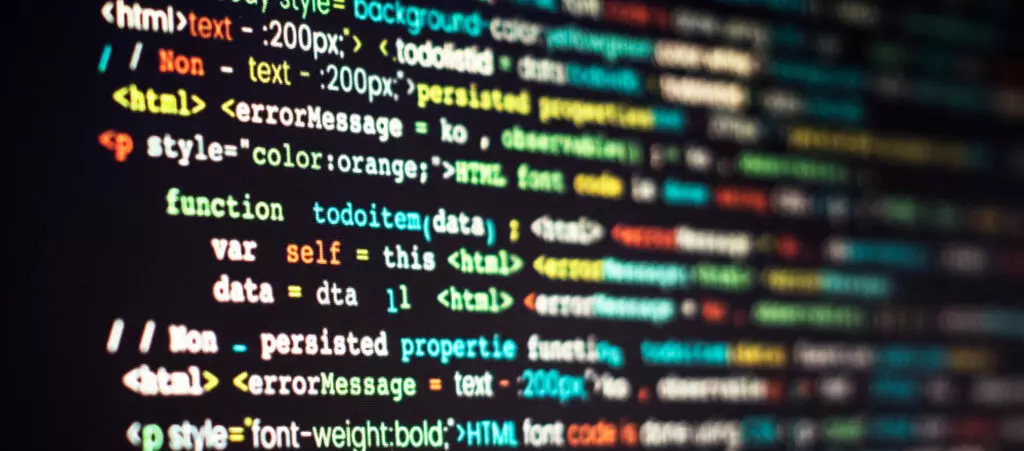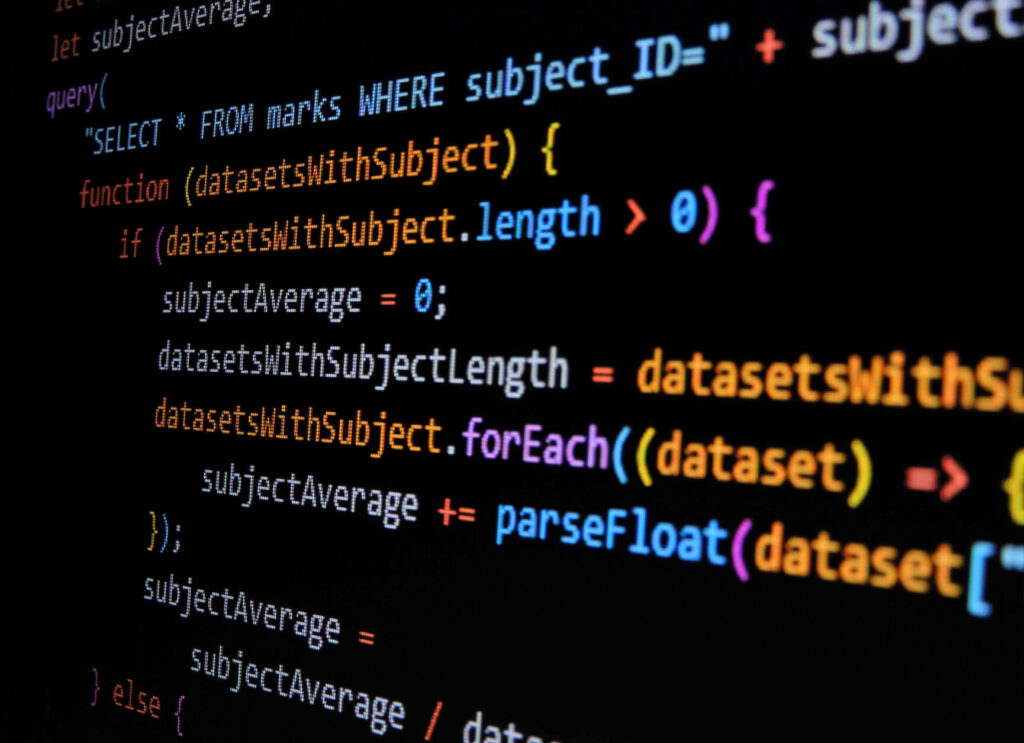Is WordPress frontend or backend?

Asking “is WordPress frontend or backend?” may make experienced developers roll their eyes because the answer is obvious. However, it may need to be clarified for people just learning to code, develop websites, or use WordPress.
The simple answer is that WordPress offers both front-end and back-end functionalities for developers and admins. As a mature CMS, WordPress provides the framework for front-end and back-end development, allowing developers and admins a great deal of flexibility.
This article explores the front-end and back-end elements of WordPress.
What is WordPress?

WordPress is a free, open-source, and self-hosted content management system (CMS) used to create and manage websites. Released in 2003, it’s become the most popular CMS platform in the world by powering over 40% of all websites.
CMSs are generally designed to be user-friendly, meaning that even people who don’t know how to code can create a website using the CMS’s built-in functions. WordPress is known for being particularly user-friendly, versatile, and scalable, fostering a large community of developers as a result.
Regardless of your skills, it’s possible to build any website using WordPress, from a personal blog to a large eCommerce site.
What are front-end and back-end in web development?
Front-end and back-end are distinct parts of any website or web application.
The front-end refers to the web app users interact with directly. It is the interface users see and interact with on their browsers. It comprises the content and styles, buttons, hover effects that appear before clicking, contact forms, search boxes, dropdown menus, layouts, texts, images, videos, and everything else users see when they visit a page.
On the other hand, the back-end is the part of the website that users don’t interact with. It’s the part hidden from them on the server side of things.
All websites are hosted on a server (a special computer designed for web hosting), and the web app and server interactions are the back-end. It comprises the server itself, the database, and the app logic that delivers dynamic content to the user. All the data storing and managing user sessions, authentication, and requests happen on the back-end.
The front-end consists of HTML, CSS, and JavaScript code rendered by the browser. In contrast, the back-end consists of programming languages such as PHP, Python, Ruby, and Java. There are libraries and frameworks for both ends, which streamline the most common tasks for each, making development more efficient.
Elements of WordPress’ front-end

Like any other CMS, the WordPress front-end consists of the elements users interact with. More specifically, the elements of WordPress’ front-end are the following.
The theme
The theme is the software that controls the layout, design, typography, color scheme, and other design elements of the website’s front-end. Developers can code themes from scratch or customize one of the thousands of free and premium WordPress themes.
The content
All the media (images and videos), text, and comments that make up the website’s pages and posts.
The widgets
Some themes support widgets, small content blocks that add functionality and interactivity to the site. They’re added to designated widget-ready areas of the theme (generally the sidebar and footer) and can display recent posts, categories, tags, calendars, search bars, social media links, and more.
The header, footer, and sidebar
The header is the uppermost section of the website, typically containing the site logo, dropdown menus, other navigation elements, social media links, opening times, account options, search functionality, and any other relevant information.
The footer is the lowermost section of the site. It usually contains copyright and contact information, links to the privacy policy, credits, and other important information.
Finally, the sidebar is a vertical column to the side of the website’s interface, typically containing social media links and other widgets.
The plugins
Plugins are software components third-party teams develop to modify existing WordPress functionality or create new functions. Many plugins, such as for user forms or social media buttons, interact with users.
Elements of WordPress’ back-end

As in other CMSs, the WordPress back-end is the part of the website that is not visible to users. Instead, it’s available only to site owners, employees, and collaborators. Often, the WordPress back-end is called the administration area or wp-admin.
The elements of the WordPress back-end are the following.
The server
Web servers are computers that store websites and make them available to the rest of the world by answering requests from users trying to access them. Their primary function is to display website content through storing, processing, and delivering web pages to users.
Since WordPress is self-hosted, website owners must set up web hosting with third parties rather than with WordPress itself. Some web hosts like WPEngine specialize in WordPress hosting and offer managed hosting solutions.
The database
A database is an organized collection of data. Data stored in the WordPress database includes posts, pages, categories and tags, user data and comments, site settings, plugin and theme data, and more. Admins use MySQL to manage the database.
The dashboard
The WordPress dashboard is the main admin control panel of the website’s back-end. From the dashboard, administrators can install and manage plugins and themes, modify user roles, create posts and pages, modify settings, and generally manage the entire site.
The media library
The media library stores all the media files uploaded to the website, including images, videos, and audio files.
As a WordPress developer, do you need to know both front-end and back-end development?
In short, yes. Indeed, people who don’t code can still use WordPress, but they won’t be able to make the most of the platform. Because of this, professional WordPress developers know how to build the front-end and back-end parts of the site.
That is, they need to be full-stack developers. For the user-facing part of the website, they need to learn HTML, CSS, and JavaScript. They need to know PHP and MySQL for the server-facing part of the website. Without knowledge of these programming languages, admins would be very limited in how much they can customize their pages, database, and other WordPress site functions.
WordPress developers can still specialize in specific areas, such as theme development and editing (front-end), or become database admins by diving deeper into MySQL. However, for developers just starting out, it’s better to learn all required languages and only specializes in an area once they’ve become proficient through everyday experience.
WordPress contains front-end and back-end
WordPress is a very flexible CMS that requires developers to learn at least basic HTML, CSS, JavaScript, PHP, and MySQL. In other words, you need to be a full-stack developer to get the most out of WordPress and enjoy the limitless possibilities it provides for you.
Understanding WordPress’s front-end and back-end elements will help you better understand how WordPress works as a platform and how the front-end and back-end interact to create a complete website.
If you found this article helpful, consider reading our blog for more WordPress guides, tips, and insights.
Related Articles

How to... / 5 min read
How to... / 5 min read
How to Make a Subscriber Into an Admin on WordPress?
While it's not the most common situation, at some point, you may find yourself needing to make a Subscriber into an Admin on your WordPress site. Maybe you need to…
Read More
How to... / 3 min read
How to... / 3 min read
How to Grant Secure Access to a Not Live WordPress Site During Development
When developing a WordPress site, you often need to collaborate with multiple developers and grant access to the website owner so they can review the progress themselves. However, granting access…
Read More
Industry Insights / 11 min read
Industry Insights / 11 min read
Do You Need a Web Developer to Build a WordPress Site?
If you’re building a WordPress site or considering building one, you wonder whether you need a web developer to create it or you can do it yourself. The answer can…
Read More
How to... / 6 min read
How to... / 6 min read
How to Change the Bottom Padding Dimensions on WordPress Blocks
If you're learning to modify your WordPress site's layouts and design, you may be wondering how to change the bottom padding dimensions of some of its elements. If that's the…
Read More
How to... / 10 min read
How to... / 10 min read
How to Disable the “Similar Posts” Section in WordPress Blogs
If you’re diving deeper into customizing your site, you may be wondering how to disable the “Similar Posts” section that appears on the bottom, sidebar, or footer of your WordPress…
Read More